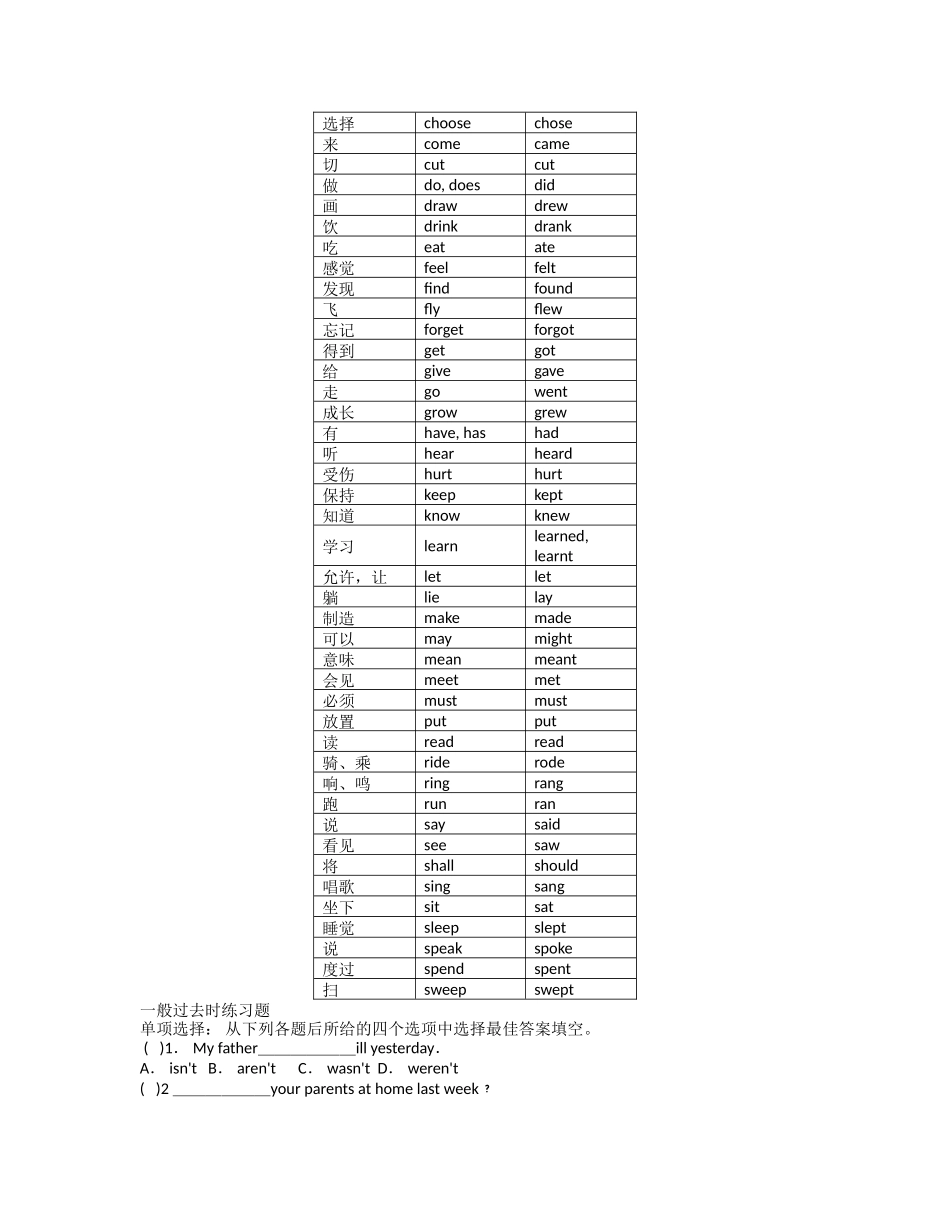初一过去时讲解及训练一般过去时一般过去时表示过去某个时间发生的动作或存在的状态,常和表示过去的时间状语连用。一般过去时也表示过去常常或反复发生的动作。常用过去时间:yesterday, this morning, just now, a moment ago, in May, last night / year / week, once upon a time, the other day, before …, when – clause, in the past 连用。如:What did you do yesterday? 昨天你干了什么?I met Lin Tao this morning. 今日上午我会到了林涛。I was there a moment ago. 刚才我在那儿2.Be 动词在一般过去时中的变化:am ⑴和 is 在一般过去时中变为 was。(was not=wasn't)are⑵在一般过去时中变为 were。(were not=weren't)⑶ 带有 was 或 were 的句子,其否定、疑问的变化和 is, am, are 一样,即否定句在 was 或 were后加 not,一般疑问句把 was 或 were 调到句首。3.句中没有 be 动词的一般过去时的句子肯定句:Jim went home yesterday.把动词改为过去形式否定句:didn't +动词原形,如:Jim went home yesterday.Jim didn't go home yesterday. 一般疑问句:在句首加 did,句子中的动词过去式变回原形。如:Jim went home yesterday.Did Jim go home yesterday? 特别疑问句:⑴疑问词+一般疑问句?如:Jim went home yesterday. Did Jim go home yesterday?What did Jim do yesterday?动词过去式变化规则:(1) 一般在动词后加-ed。如:play—played, offer—offered, weigh—weighed, destroy— destroyed, sign—signed. (2) 在以字母 e 结尾的动词后,只加-d。如:like—liked, provide—provided, hate — hated, date—dated。(3) 在以“辅音字母+y”结尾的动词后,则改 y 为 i,再加—ed。如:supply—supplied, fly—flied, study— studied. (4) 在以单短元音的重读闭音节结尾且,末尾只有一个辅音字母的动词后,双写最后一个辅音字母,再加-ed。如:plan—planned, refer—referred, regret—regretted, ban—banned. 不规则动词过去式归纳:词义现 在 ( 原形)过去是am, is (be)was是are (be)were成为becomebecame开始beginbegan弯曲bendbent吹blowblew买buybought能cancould捕捉catchcaught选择choosechose来comecame切cutcut做do, doesdid画drawdrew饮drinkd...


